Rocking Behaviour
One of the low frequency structural modeshapes for the driver produces a rocking behaviour. Although this is calculated in FE models as a possible modeshape, it may not always be excited or only weakly excited and this depends upon the non-axisymmetric loading on the diaphragm.
Rocking behaviour was detected in the driver at low frequency both in simulated and experimentally obtained data. Simulations reveal a slight rocking tendency at 123Hz, pivoting across an asymmetry in the frame vent hole layout where a ring pattern of holes is discontinued due to the electrical terminals.
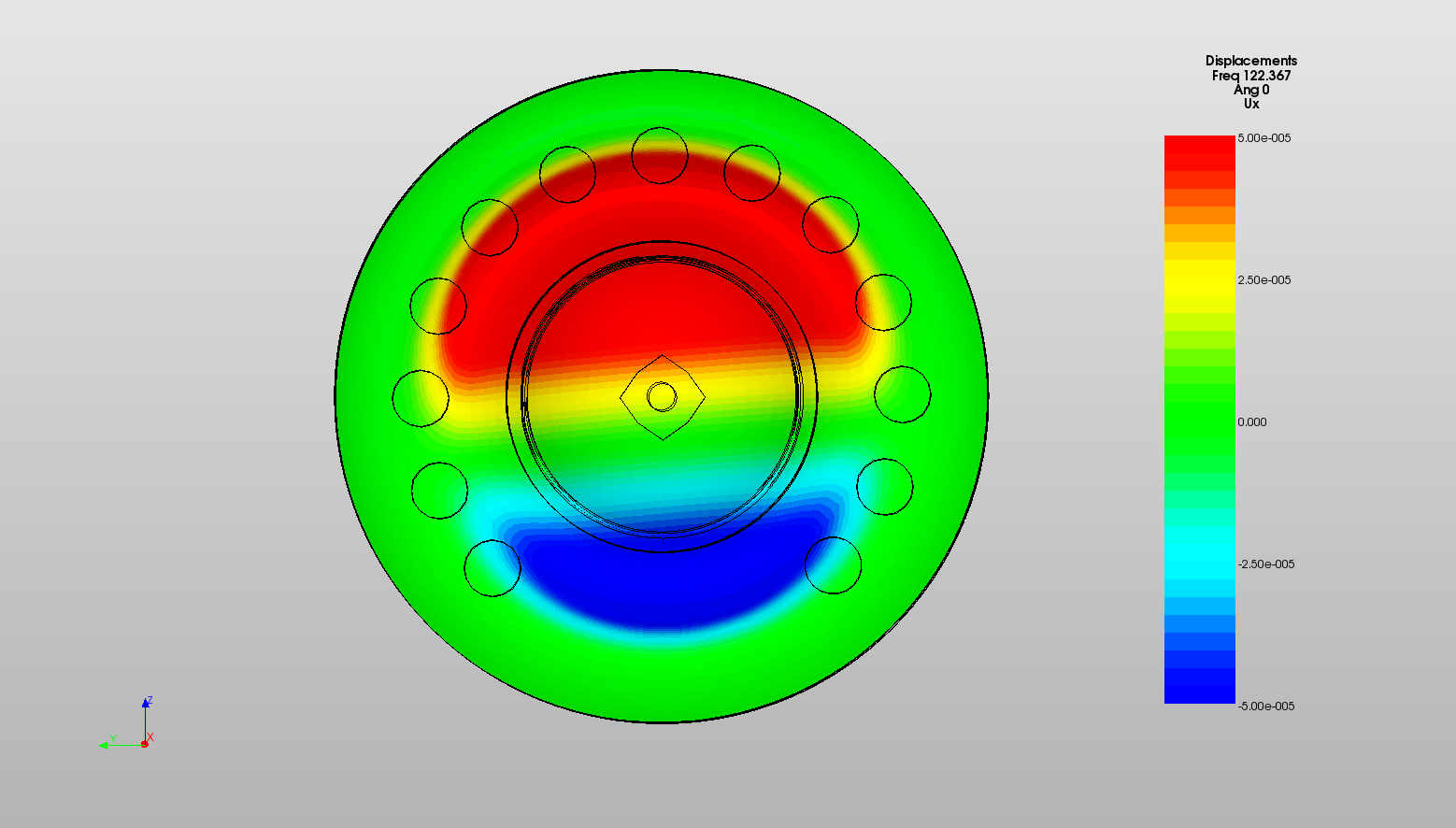
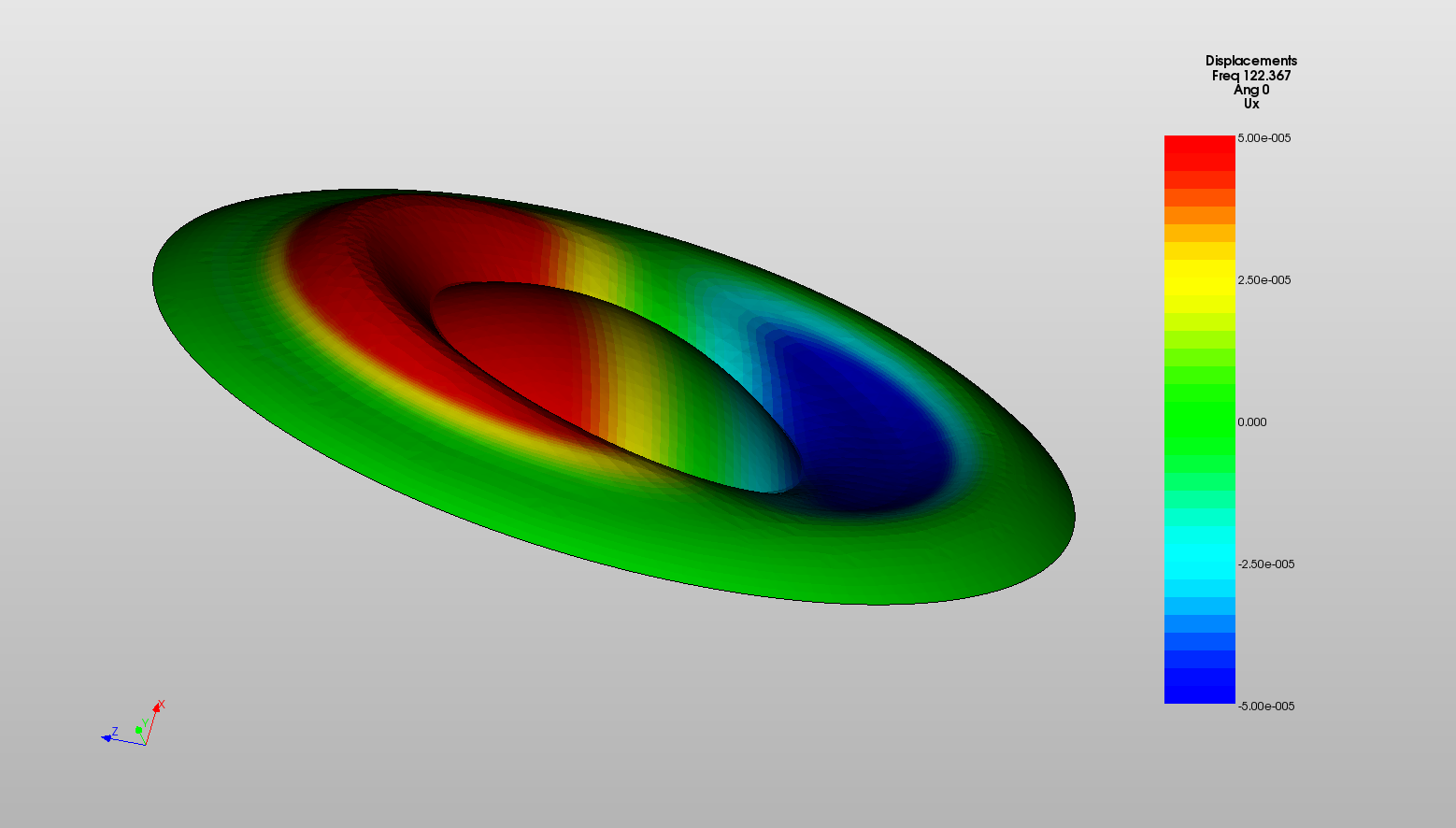
In the measured frequency response, a slight discontinuity in the SPL can be detected at ~200Hz (see graph below). Pure rocking would not cause this as this movement is superimposed upon a more general axial motion of the diaphragm, which radiates sound and the contribution from rocking effectively cancels. What sometimes happens however is that the rocking produces a biased motion where one side of the diaphragm is constrained, producing less output on the measurement axis of the driver.
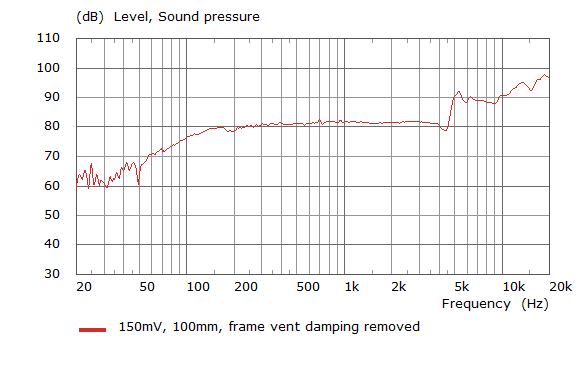
Measurements using a laser Doppler vibrometer were performed to try and detect this and try to confirm that the asymmetric frame vent hole layout was the cause. The scan points were taken on the top of the voice coil - 2 measurement taken at opposite sides.

The graph below shows the velocity measured at the 2 scan points and the phase when an airload is present.
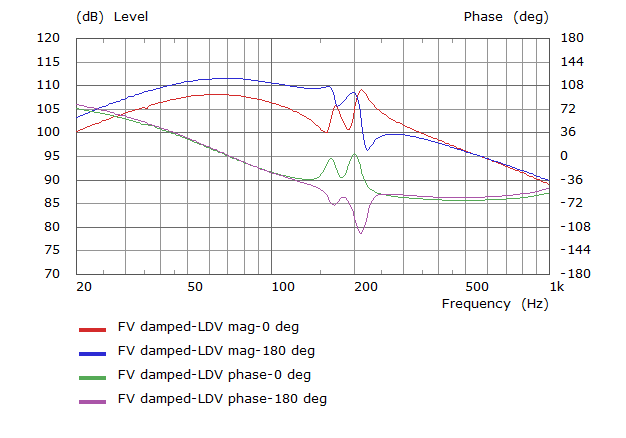
The results show that one side of the diaphragm moves more than the other over a wide low frequency range, but the overall motion is in phase - a sort of biased piston motion. Just below 200Hz, a resonance occurs where the magnitudes and phases become inverted suggesting a pivoting behaviour throughout a narrow band of frequencies.
If the cause of this was imbalanced acoustic loading due to the frame vents, then it would be logical to see this behaviour diminish or disappear when the air was removed. The vacuum chamber was used to check this.
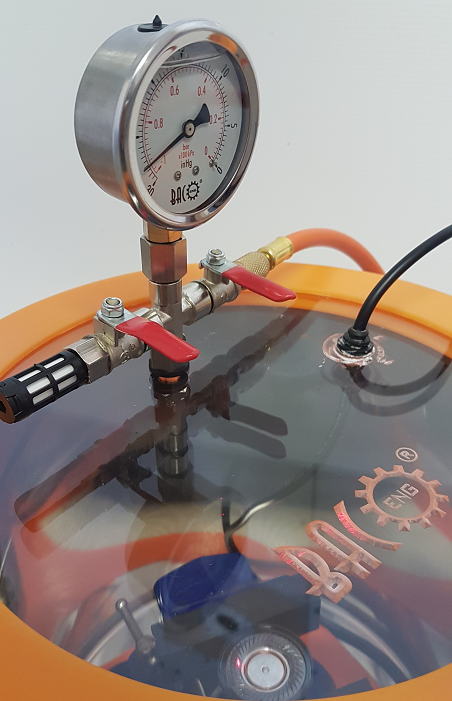
The results below indicate that even without significant airload, there remains a strong rocking behaviour in the mechanical system, measure at the 2 opposite points of the voice coil. The frequency of the localised resonance around 200Hz appears to have shifted hgher, confirming that the air mass has been removed.

This result indicates that mechanical causes may be primarily producing the rocking and that air loading is very much a second order effect. One feature which is not present in the model is the leadout wire from the voice coil (visible through the clear diaphragm in the closeup photo of the driver) which may locally constrain the motion of the lightweight diaphragm. This specific area of the driver mechanics may be interesting to investigate further, refining to model to include leadout wires to find ways of mitigating the rocking behaviour. This may be important in applications where signal processing (ANC for example) requires pistonic behaviour from the driver in order to operate correctly.


